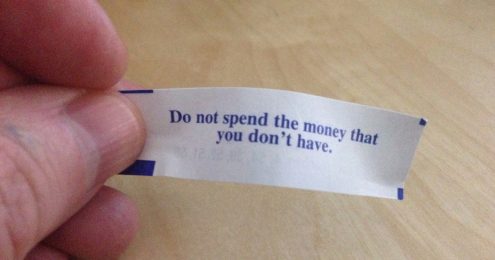In his best selling book, Give and Take, organizational psychologist Adam Grant offers a powerful and very simple framework for how people operate in an organization or a community.
Grant tells us there are three kinds of folks:
- Takers – folks who enter a situation wondering what others can do for them
- Givers – folks who are always thinking about how to help others
- Matchers – folks who think about mutual benefit – if I do X for you, will you do Y for me?
The majority of us, it seems, are Matchers.
Grant’s research is unequivocal: the higher percentage of Givers you have in your organization, the stronger it becomes. Givers create a culture of caring where people work to ensure each others’ success.
And that brings me to Heidi Dressler. Heidi was one of the very first people to join the Nonprofit Leadership Lab when we first opened the doors in 2017. She was still a member – one of hundreds of original members that still participate in the Lab – until very recently, when she passed away.
THE QUEEN GIVER
So many of our original members are pure, unadulterated Givers. These originals built a giving culture in our Lab community and we are so grateful to them. New members see it and feel it as we continue to grow. More than 5,000 members and counting.
But Heidi was the Queen Giver.
The absence of this remarkable woman is felt palpably by our Lab team and by the thousands who received gifts large and small from Heidi nearly every single day.
At a recent speaking gig at Stanford, I met a woman named Elaine Johnson. Elaine runs Housing Santa Cruz County. HSCC partners with organizations across sectors throughout the county dedicated to making Santa Cruz County in California affordable for all. Turns out she is a member of the Nonprofit Leadership Lab. A first time E.D, this funny, high energy woman spoke of her first year in the role.
Her struggles rang true for me. I’d been there. Those same struggles ring true for coaching clients galore. Being in your first twelve months as an E.D. is like trying to hang onto a bucking bronco. Having coached many diverse clients, I know these struggles are made all the more complex if you are the organization’s first leader of color.
And then she said to me, “I made it through that first year because of your Leadership Lab. Oh, and because of Heidi Dressler.”
Like all our other board and staff members, Heidi joined the Lab to become a better leader and manager of the nonprofit she led, Threshold Choir. a small and mighty nonprofit with chapters around the world. Their mission: to sing at the bedside of the dying.
Think about that work for a moment: Heidi was in the very business of giving.
Now make no mistake; this is not an obituary post – Heidi would not have liked that one little bit. I can hear her telling me, “Joan- do your thing. Use my story, but be sure to make a larger point about the nonprofit sector we both love!”
To make that larger point, here are some important lessons Adam Grant (and Heidi Dressler) offer each of you as you try to build a generous, giving culture of belonging in your organization.
6 WAYS TO CREATE A CULTURE OF GIVERS AT YOUR ORGANIZATION
Maybe you think the simple answer is to hire a lot of natural givers. It’s not that simple.
1. Use Adam Grant’s model to assess your team.
What have you got in your organization? Loosely categorize folks (including yourself). And be really really honest with yourself about who the Takers are.
2. Incorporate the values of giving into your performance review process.
It’s time to assess folks on their behaviors and set clear expectations of the behaviors you expect in your organization.
Here’s an idea: Have your entire team read Grant’s book and discuss the core behaviors you believe should be part of your organization’s culture based on what you learn about his research and the outcomes inside organizations. Build that list of behaviors / values together and incorporate them into the self assessment form and the review discussion.
3. Hold “Takers” accountable or move them out.
Takers take up a lot of space in your organization. They are the bad apples in the bunch. Takers are sabotaging your culture. Even if they are high performers. I spend more time with clients advocating for managing people out then almost anything else (even more than boards who are not engaging in development work).
Givers cannot thrive in a culture where takers are not held accountable. And Matchers will follow the predominant attribute in the organization and in fact they will hold steadfast to the quid pro quo mindset to ensure they get something from the Takers.
4. Create a culture where asking for help is a norm.
Grant’s research tells us that successful Givers recognize they can ask for help and that building a culture where folks feel comfortable seeking help ignites helpers to want to help. And everyone feels more connected as a result.
5. Hire Givers.
Looking for a Giver? You need to ask different kinds of questions. This is another exercise your team could work on after reading the book – what would you need to ask to understand if you have a Giver or a Taker? What do you need to look for in how the candidate interacts with those in the process. Some questions that come to mind for me:
- When was the last time you asked for help? Describe the situation and how it played out.
- Tell me about your best boss.
- Tell me about your family (bio or chosen).
- What do you see as the keys to being a good manager?
You’ll generate other questions but the idea here is to come up with questions and then listen really carefully. Takers usually reveal themselves.
6. Work to protect your Givers.
Givers can burn out. This doesn’t surprise you, does it? Givers don’t always set boundaries. Givers can overdo it. As a leader, you need to help. But perhaps you are modeling this very behavior. Giving on steroids.
Talk about this in your organization. How do you learn to say no? How do you take care of yourself as a Giver?
WHAT ABOUT THE MATCHERS?
Are you wondering about Matchers? Weed out your Takers, build a culture of giving and your Matchers will follow the norm. Adam Grant says that’s what happens and I believe him.
You turn Matchers into Givers.
For over six years, nonprofit leaders have come to our private community to ask for tactical help and how to navigate jobs that are taxing, overwhelming, and lonely. After re-reading Grant’s book, I can see that help seeking is a norm in our community.
And for six years, every single day, Heidi Dressler was the first person to post a response. Sometimes it was quite blunt “RUNNNNN!!!!” or “Time to update your resume!”
It was always – always – caring.
She helped us to build a culture of giving. When we first started, we talked about the need for more experts to answer questions as our community grew. And yes, we do have more folks on our team offering their expertise.
But the amazing thing (or maybe it’s not so amazing) is that other members weigh in on nearly every post with thoughtful, insightful, and supportive advice and comments. When I jump in to answer a question, I often find that the best answer has already been posted. By another member. By a Giver like Heidi.
Here’s to Heidi Dressler who modeled the value of giving from day 1, helping us to foster a culture of giving in our Nonprofit Leadership Lab. It has been a gift to those who have come through our virtual doors.
A gift from a giver. Thanks Heidi.



